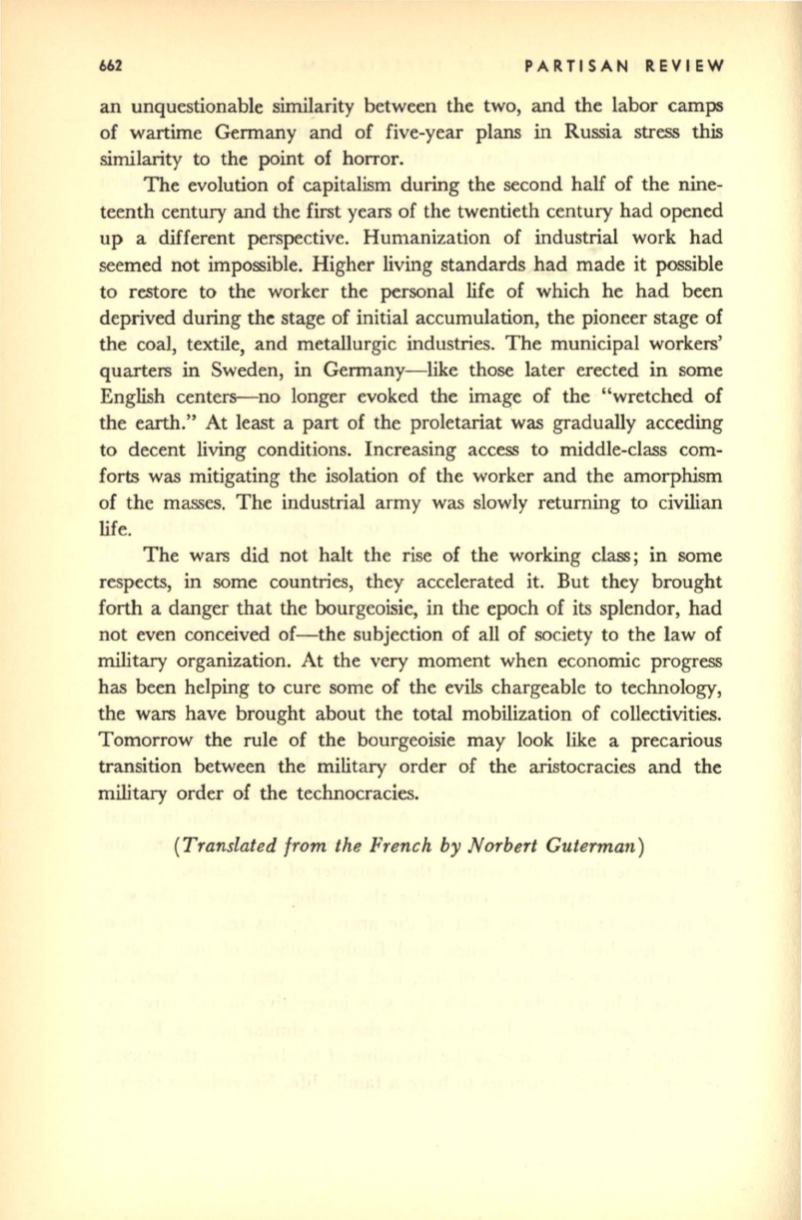
662
PARTISAN REVIEW
an unquestionable similarity between the two, and the labor camps
of wartime Germany and of five-year plans in Russia stress this
similarity to the point of horror.
The evolution of capitalism during the second half of the nine–
teenth century and the first years of the twentieth century had opened
up a different perspective. Humanization of industrial work had
seemed not impossible. Higher living standards had made it possible
to restore to the worker the personal life of which he had been
deprived during the stage of initial accumulation, the pioneer stage of
the coal, textile, and metallurgic industries. The municipal workers'
quarters in Sweden, in Germany-like those later erected in some
English centers-no longer evoked the image of the "wretched of
the earth." At least a part of the proletariat was gradually acceding
to decent living conditions. Increasing access to middle-class com–
forts was mitigating the isolation of the worker and the amorphism
of the masses. The industrial army was slowly returning to civilian
life.
The wars did not halt the rise of the working class; in some
respects, in some countries, they accelerated it. But they brought
forth a danger that the bourgeoisie, in the epoch of
its
splendor, had
not even conceived of-the subjection of all of society to the law of
military organization. At the very moment when economic progress
has been helping to cure some of the evils chargeable to technology,
the wars have brought about the total mobilization of collectivities.
Tomorrow the rule of the bourgeoisie may look like a precarious
transition between the military order of the aristocracies and the
military order of the technocracies.
(Translated from the French by N oTbert Guterman)


